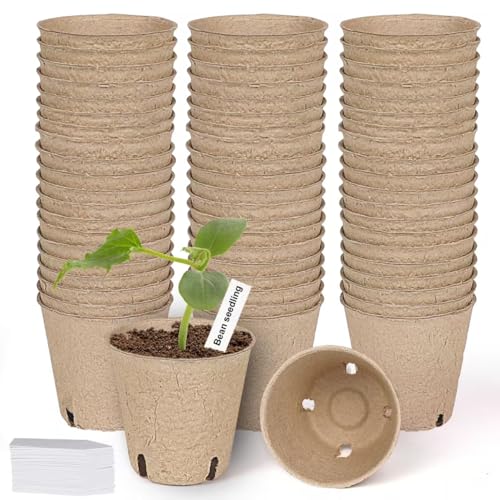Did you know that choosing the right containers for Florida gardens can make or break your Florida garden? It’s true! In fact, a study by the University of Florida found that proper container selection can increase plant survival rates. It improves by up to 30% in our challenging climate.
As a fellow Florida gardening enthusiast, I’ve learned through trial and error (and more than a few crispy plants!) that picking the right pot is crucial. Today, I’m excited to share my top container picks for every plant type. I’m hoping this will help you create a lush, thriving garden that’ll be the envy of your neighborhood. Let’s dive in and find your perfect pots!
Understanding Florida’s Unique Container Gardening Challenges
Container gardening in Florida is rewarding, but the state’s unique climate does come with its own set of challenges. Understanding how Florida’s heat, humidity, and occasional weather extremes affect your plants can help you choose the best containers for Florida gardens.
The Impact of Intense Heat and Humidity on Containers in Florida Gardens
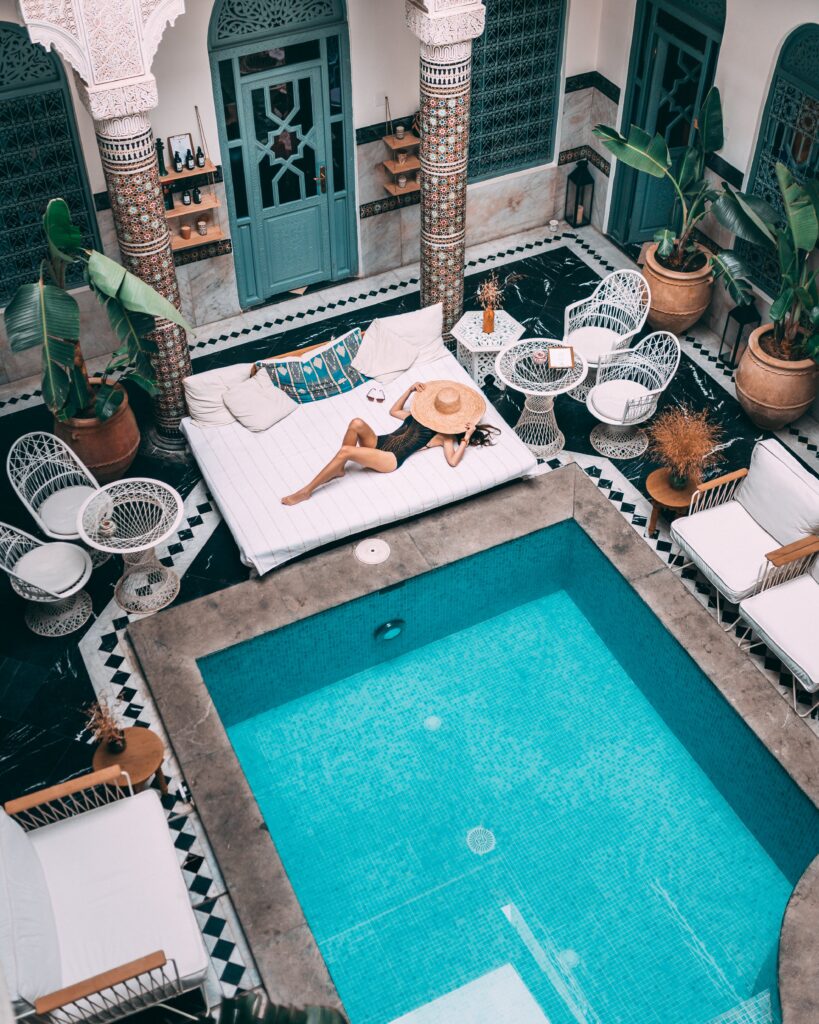
Florida’s intense sun and high humidity can cause container plants to dry out quickly or, in some cases, become too moist. During the summer months, the sun can heat up containers fast. Especially vulnerable are those made of metal or dark-colored plastic. These can bake the roots and stress out your plants. Opt for lighter-colored containers. Or, you can consider materials like terracotta or glazed ceramic, which stay cooler in the heat and help regulate soil temperature.
Dealing with Sudden Temperature Fluctuations
While Florida is generally warm, sudden cold snaps in the winter can catch you off guard. Container plants are more vulnerable to these fluctuations since their roots don’t have the insulation of the ground. If a chilly night is coming, it’s easy to move smaller containers to a sheltered spot. You can cover larger ones with frost blankets. Choosing containers for Florida gardens with good mobility or placing them on rolling carts can make a big difference.
Importance of Proper Drainage in Florida’s Rainy Season
Florida’s rainy season can drench your container garden, and without proper drainage, plants can suffer from root rot. When choosing containers for Florida gardens, make sure they have plenty of drainage holes to allow excess water to escape.
Using well-draining soil can also help prevent water-logging. Raised containers can be a great solution for areas prone to heavy downpours, as they ensure water doesn’t pool at the base of your plants.
Considerations for Salt Air in Coastal Areas
If you live near the coast like I do, salt air can be an added challenge for your container plants. Salt can accumulate on leaves and in the soil, causing damage over time.
Look for salt-tolerant plants like succulents, coastal natives, or even certain herbs. You’ll also want to rinse your containers and plants occasionally with fresh water to wash away any salt buildup, especially after a windy day by the ocean.
Balancing Sun Exposure and Shade for Container Plants
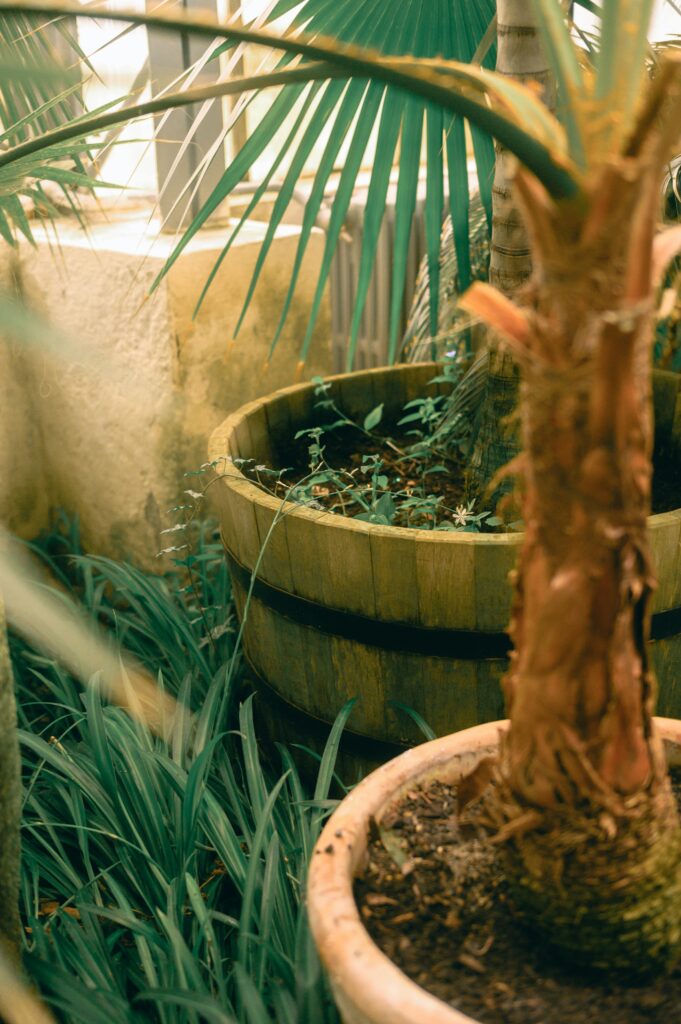
Florida’s strong sun is great for many plants, but too much exposure can scorch delicate foliage. Keep your containers in areas where you can adjust their light exposure throughout the day.
For plants that prefer partial shade, consider using shade cloth or placing them under patio covers. With container gardening, you have the flexibility to move plants as needed—just make sure to keep an eye on how the sun shifts in your space.
By addressing these unique challenges, you can create a thriving container garden perfectly suited to Florida’s climate!
Essential Features of Containers for Florida Gardens
Choosing the right containers for your Florida garden is key to helping your plants thrive, especially with the state’s heat, humidity, and occasional storms. Here’s a detailed guide on what to look for in containers that can handle Florida’s unique climate and keep your plants happy and healthy.
1. Heat-Resistant Materials to Protect Plant Roots
Florida’s intense sun can cause containers to heat up, which can bake plant roots and stress them out. The material of your container plays a big role in keeping your plants cool.
Choose containers made from heat-resistant materials like terracotta, glazed ceramic, or fabric grow bags. These materials help keep soil cooler, allowing for better root health.
Avoid dark-colored plastic or metal containers for Florida gardens. They absorb heat and can cause soil temperatures to rise too quickly. If you already have dark containers, try wrapping them in a lighter fabric or shade cloth to reflect heat.
2. Proper Drainage Holes to Prevent Water-logging
Florida’s rainy season brings heavy downpours, and without proper drainage, your plants can drown in too much water, leading to root rot.
Make sure your containers have multiple drainage holes. A single hole may not be enough during Florida’s frequent storms, so check that your container allows excess water to escape freely.
If your container doesn’t have enough drainage holes, drill extra holes in the bottom. A layer of gravel or stones at the bottom can also help keep the roots above any standing water.
Elevate containers slightly off the ground by placing them on pot feet or bricks. This helps water flow out and keeps plants from sitting in pooled water during heavy rains.
Light-Colored Containers to Reflect Sunlight
In Florida’s strong sun, the color of your container matters. Lighter shades reflect sunlight, helping to keep the container—and the soil inside—cooler.
Choose containers for Florida gardens in light colors such as white, beige, or pastel shades, especially during the summer months. These colors reflect more sunlight and keep your plants’ roots from overheating.
If you already have dark containers, consider painting them a lighter color or using reflective wraps around them to protect your plants.
I use dark containers outdoors only during the winter months, particularly when trying to encourage root growth in cuttings.
- Classic Appearance: Its curved silhouette and raised details offer up a touch of classic character,…
- GARDEN DECOR: Decorate your space with the Veradek Taper planter; Whether you use it as a patio,…
- Stylish Concrete Planter – Unveil a modern design boasting graceful curves and an authentic surface…
- Modern & Stylish Design: Worth Garden large square planters are designed with matte finishing…
4. Durability to Withstand Florida’s Weather Extremes
Florida’s weather can be unpredictable, with everything from strong sun to sudden tropical storms. Your containers need to be durable enough to handle it all.
Invest in high-quality containers for Florida gardens made from sturdy materials like heavy-duty plastic, fiberglass, or glazed ceramic. These materials can stand up to heat, rain, and strong winds without cracking or deteriorating.
Secure lightweight containers or place them in sheltered areas to prevent them from toppling over in high winds. Heavy containers like terracotta or concrete are more stable but harder to move, so think about where you’ll place them long-term.
5. Size Considerations for Different Plant Types
The size of your container will affect plant growth, root health, and how much watering is needed—especially important in Florida’s heat.
For larger plants like fruit trees or shrubs, choose containers that are at least 18-24 inches wide and deep. These give the roots enough room to spread and hold moisture longer between waterings.
For smaller plants, herbs, or annual flowers, a container 12-16 inches deep will suffice. Make sure the pot is big enough to support root growth without needing constant watering.
When using grow bags, choose the right size for your plant. For example, a 5- to 10-gallon grow bag works well for vegetables like tomatoes or peppers, while a 1- to 3-gallon bag is great for herbs or smaller plants.
By choosing containers with these essential features, you’ll set your Florida garden up for success, ensuring your plants stay cool, hydrated, and protected from the elements.
Top Container Picks for Florida Vegetable Gardens
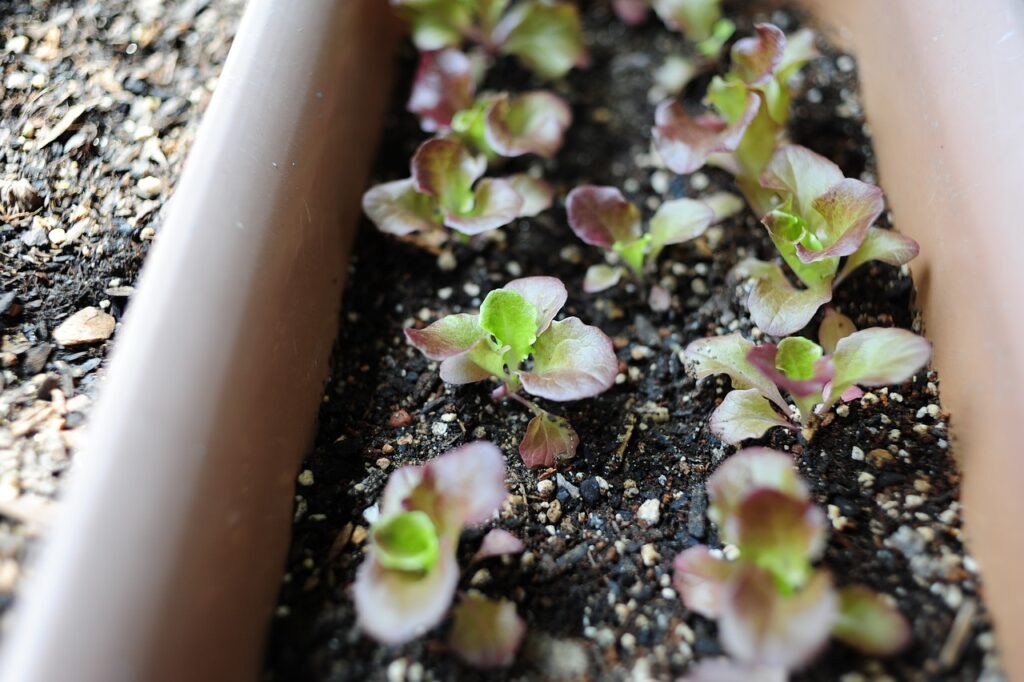
Choosing the right containers for your Florida vegetable garden can make all the difference in how well your crops thrive, especially in the hot, humid climate. Here’s a breakdown of the best container options for different types of veggies, helping you maximize space, conserve water, and keep your plants healthy.
1. Self-Watering Containers for Thirsty Veggies
Florida’s heat can cause containers to dry out quickly, and thirsty vegetables like cucumbers, eggplants, and squash need consistent moisture. Self-watering containers are a great solution, as they have built-in reservoirs that help regulate water supply.
- Choose a self-watering container with a large water reservoir. This reduces the need for frequent watering, which is especially useful during Florida’s scorching summer days.
- Keep an eye on the reservoir, especially during extended dry periods, and refill as needed. For vegetables that like a lot of moisture, such as cucumbers or melons, this ensures the soil stays evenly moist.
2. Large, Deep Pots for Tomatoes and Peppers
Tomatoes and peppers have deep root systems and need plenty of space to grow strong and healthy. Large, deep containers provide the room they need and help retain moisture longer, reducing how often you’ll need to water.
- Select pots that are at least 18 inches deep and wide for tomatoes, and 14-18 inches for peppers. The extra depth gives roots room to expand and supports taller plants.
- Choose sturdy materials like terracotta or heavy-duty plastic to support the weight of the plants, soil, and fruit. If you’re growing indeterminate tomatoes, consider adding a cage or trellis directly into the container for support.
3. Vertical Gardening Containers for Space-Saving
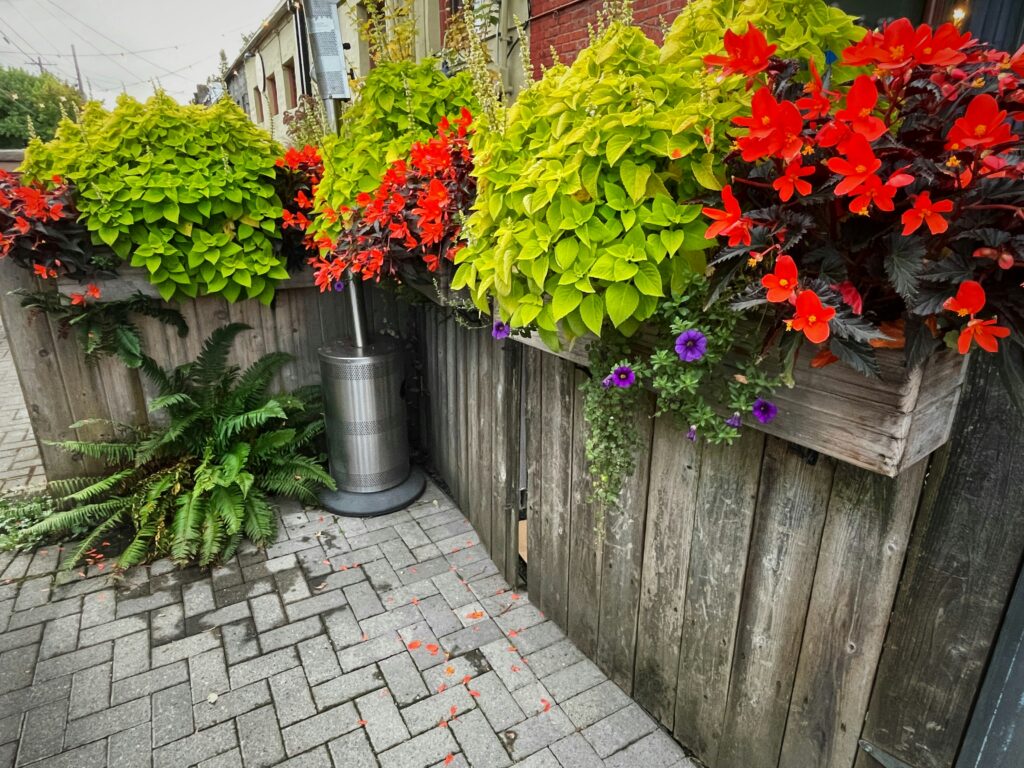
If you’re working with a small patio or balcony, vertical gardening containers are ideal for maximizing space. These containers stack or hang, allowing you to grow a variety of vegetables without taking up much floor space.
- Look for vertical garden systems with multiple tiers or pockets that can support smaller vegetables, like lettuce, spinach, or even strawberries.
- Position vertical containers near a wall or railing that can provide stability, especially during windy conditions. Make sure the structure allows for proper drainage at all levels, so water doesn’t pool at the base.
4. Fabric Grow Bags for Root Vegetables
- Sturdy Fabric Material: Made of 300g of thickened nonwoven fabric, these pots are moderately…
- Versatile Planter Bags: Ideal for growing potatoes, these 6 colorful bags are also great for other…
- 【Premium Quality Material】Made of high quality and durable non-woven fabric, which is fluffy and…
Fabric grow bags are perfect for root vegetables like carrots, potatoes, and beets. They’re breathable, providing excellent drainage and air circulation, which prevents the soil from becoming waterlogged and promotes healthy root development.
- Use 5- to 10-gallon grow bags for most root vegetables. These bags give your crops the space they need to grow deep without restricting root movement.
- Place grow bags in a spot where they’ll get full sun, but be ready to water more frequently during hot weather, as fabric containers can dry out faster. Add mulch on top of the soil to help retain moisture.
5. Shallow, Wide Containers for Herbs and Leafy Greens
Herbs like basil, oregano, and cilantro, as well as leafy greens like lettuce and arugula, thrive in shallow containers with plenty of surface area. These plants don’t need deep soil but benefit from being spaced out for good air circulation.
- Choose shallow containers that are 6-8 inches deep but wide enough to accommodate several plants. This allows you to grow a variety of herbs or greens together in one container.
- Use a well-draining potting mix, and consider placing these containers in partial shade during the hottest part of the day to prevent greens from wilting or bolting prematurely.
By selecting the right containers for your vegetables, you’ll set yourself up for a productive and manageable Florida garden, no matter the size of your space or the challenges of the climate!
Best Containers for Florida’s Flowering Plants and Shrubs
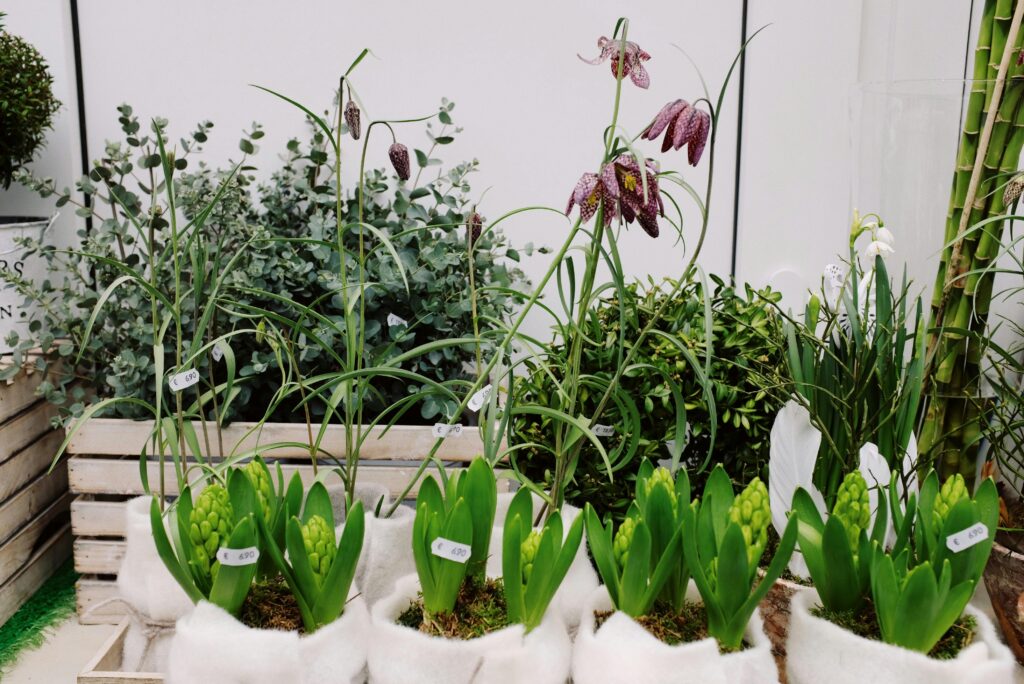
Florida’s climate is perfect for growing a wide range of flowering plants and shrubs, but choosing the right container is essential for keeping them healthy and vibrant year-round. Here’s a guide to selecting the best containers for different types of flowering plants and shrubs, with tips on keeping them looking their best in Florida’s unique conditions.
1. Decorative Ceramic Pots for Colorful Annuals
- Ceramic Plant Pot: The ceramic pot is high temperature fired stoneware which are durable and lightweight that convenient for you to use
- You will get 3 different sizes of ceramic plant pots, the measurement of S,M,L size: S: 4″D * 3″H; M: 5.5″D * 4″H; L: 7″D * 5″H. Different sizes meets your different needs, which are suitable for different plants, like succulent, herbs, cactus, orchid, aloe vera, pothos, peace lily.
- 【COMBINATION SETS IN DIFFERENT SIZES】The ceramic flower pots have three different sizes. They are suitable for growing most kinds of family/office, plants in both small and medium size, such as orchids, Iilies, bamboo, african violets, snake plants, peppermint plants, cactus, aloe and succulent plants.
Annual flowers like marigolds, petunias, and impatiens add pops of color to patios and gardens. Decorative ceramic pots not only enhance their beauty but also provide the insulation needed to keep roots cooler during Florida’s hot summer days.
- Choose glazed ceramic pots for annuals, as these retain moisture better than unglazed options. This is especially important in Florida’s heat, where moisture can evaporate quickly.
- Make sure the pot has good drainage holes to prevent water-logging during the rainy season. If the pot doesn’t have adequate drainage, consider drilling extra holes or adding a layer of gravel at the bottom.
- Pair brightly colored flowers with contrasting or complementary pot colors to create a striking visual effect on your patio or in the garden.
2. Hanging Baskets for Trailing Flowers
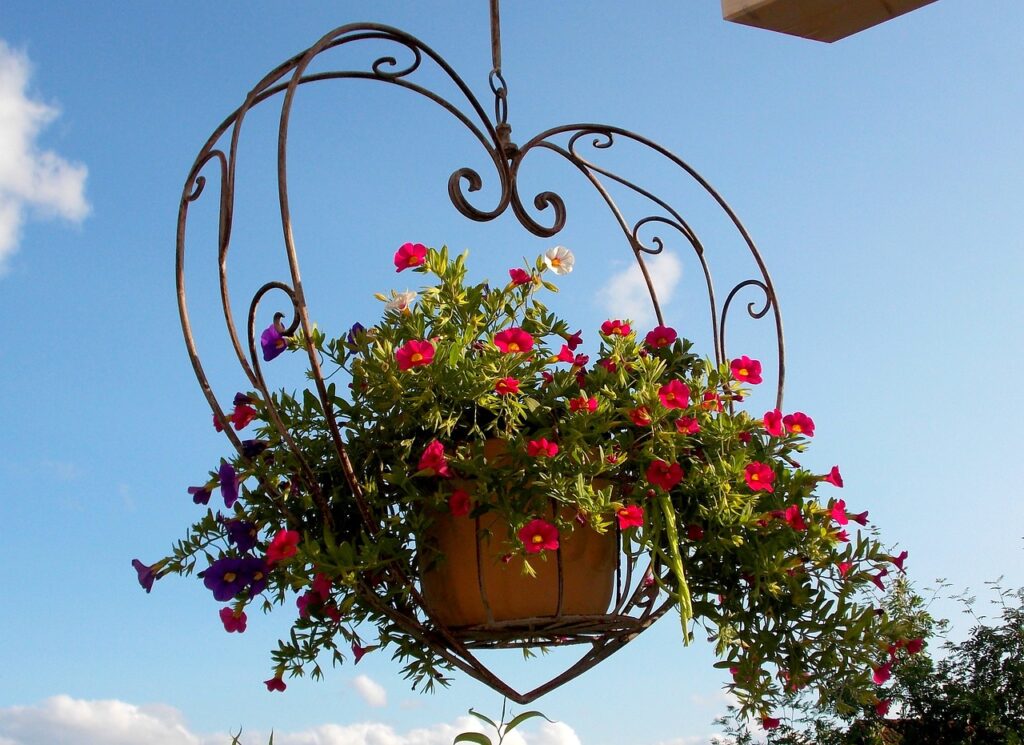
Trailing flowers like verbena, lobelia, and ivy geraniums thrive in hanging baskets, adding vertical interest to patios and porches. Hanging baskets are great for maximizing space while giving you the freedom to move plants into or out of the sun.
- Choose sturdy hanging baskets made from materials like wire, resin, or metal with a coconut coir or moss liner for proper drainage. Avoid plastic liners, as they can retain too much water and cause root rot.
- Position the baskets where they’ll get enough sunlight but can be moved into the shade during particularly hot afternoons to prevent scorching.
- Water hanging baskets more frequently, as they tend to dry out faster, especially in Florida’s warm, breezy weather. Self-watering baskets can also help maintain moisture levels.
3. Lightweight Resin Containers for Easy Mobility
- Elegant, Glazed Design – Features the stylish look of ceramic with a glossy finish and horizontal brush lines that enhance your plant’s natural beauty; available in bold, vibrant colors to suit any decor.
- CLASSIC DESIGN: Our plant pot features a stunning, on-trend classic design that complements a variety of aesthetic settings. It seamlessly blends into modern, minimalist, traditional décor and indoor and outdoor settings.
- CLASSIC DESIGN: Featuring a stunning design, this shallow bowl planter has a pottery-like finish and a classic design that features a complementary range of colors that seamlessly blend into modern and traditional settings.
Resin containers are lightweight, durable, and weather-resistant, making them perfect for gardeners who like to rearrange their outdoor space or move plants to protect them from extreme weather.
- Choose resin containers with UV protection to prevent fading or cracking in the Florida sun. They come in a variety of styles that mimic more expensive materials like stone or ceramic but are much easier to move.
- These containers are ideal for medium-sized flowering plants, such as hibiscus or gardenias. Their lightweight design means you can easily relocate them if needed—whether to catch more sun, avoid a storm, or bring them indoors during cold snaps.
- Make sure the containers have proper drainage, and consider using a saucer underneath to catch excess water during heavy rains.
4. Large, Sturdy Pots for Flowering Shrubs
Flowering shrubs like hydrangeas, oleanders, and azaleas need more room to grow and thrive. Large, sturdy pots are essential to give their roots space and to support their size and weight.
- Opt for large containers—at least 18-24 inches deep and wide—to accommodate the root systems of shrubs. Terracotta or heavy-duty resin containers work well because they’re both durable and stable, preventing the pots from tipping over in high winds.
- Place shrubs in spots where they’ll get the right balance of sun and shade based on their specific needs. For example, hydrangeas do well in partial shade, while hibiscus prefers full sun.
- Water shrubs deeply but less frequently, allowing the water to reach the deeper roots, and fertilize regularly with a slow-release fertilizer to support flowering.
5. Window Boxes for Small-Space Flower Gardens
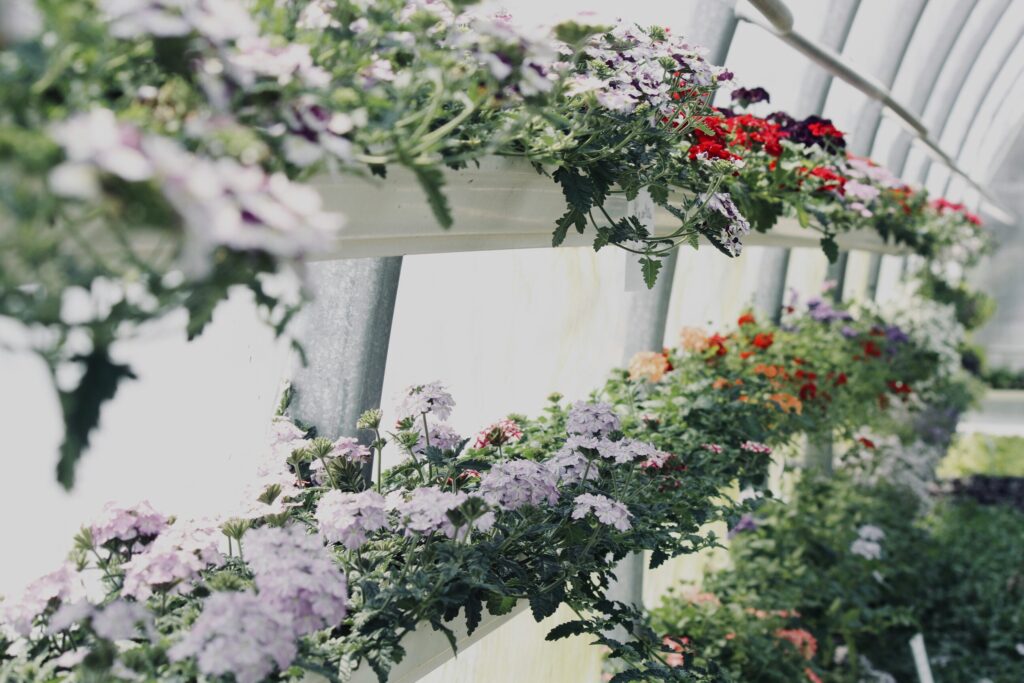
If space is limited, window boxes are perfect for creating a colorful flower garden without taking up ground space. They’re ideal for small flowers like pansies, nasturtiums, or even small trailing varieties that spill over the sides.
- Choose window boxes made from materials like wood, plastic, or metal, with enough drainage holes to prevent water buildup, especially after Florida’s heavy rains.
- Position the boxes in areas where the flowers can get plenty of sunlight, but keep an eye on them in the hottest part of the day. Window boxes tend to dry out faster, so regular watering is key.
- Mix flowering plants with a variety of textures and heights, combining upright flowers with trailing ones for a balanced and eye-catching display. Add herbs or edible flowers for a practical, decorative touch.
By choosing the right containers for your flowering plants and shrubs, you’ll ensure they thrive in Florida’s climate, creating a stunning, low-maintenance garden that’s easy to manage all year long.
Ideal Containers for Florida Native Plants and Succulents
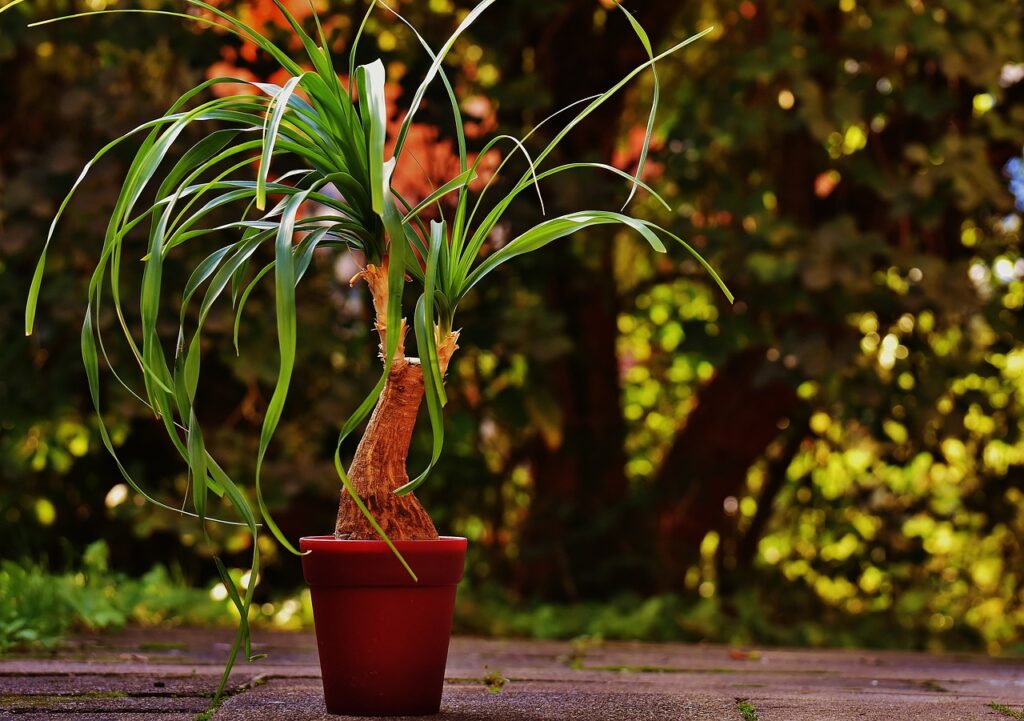
Florida’s native plants and succulents thrive in containers that provide the right drainage, space, and aesthetic appeal to complement their natural beauty.
Whether you’re growing drought-tolerant natives or creating a striking succulent display, choosing the right container is key to ensuring they flourish in Florida’s unique climate. Here’s a guide to selecting the best containers for these hardy plants.
1. Terra Cotta Pots for Excellent Drainage
Terra cotta pots are a go-to choice for native plants and succulents, particularly in Florida’s humid environment, because they allow excess moisture to evaporate easily through the porous material.
- Choose terra cotta pots with drainage holes, which are essential for preventing water buildup and root rot—especially important for succulents and drought-tolerant natives like blanket flower and coreopsis.
- Because terra cotta pots can dry out more quickly, check soil moisture frequently, but avoid overwatering. Many native plants prefer drier conditions, and terra cotta helps mimic their natural habitat.
- Place your terra cotta containers in a sunny spot but be mindful that they can absorb heat. Mulching around the base of your plants can help keep the soil cooler in Florida’s intense sun.
2. Shallow Dishes for Succulent Gardens
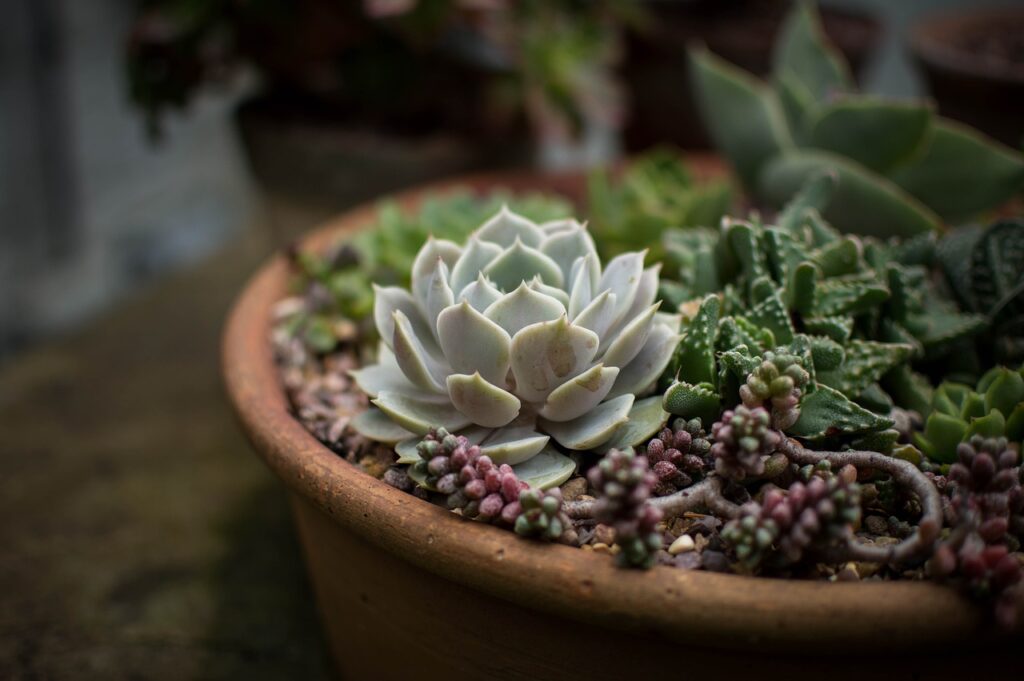
Succulents, such as aloe, echeveria, and agave, thrive in shallow containers that offer plenty of surface area for sprawling, shallow root systems. Shallow dishes also create a beautiful, compact display, perfect for patios or balconies.
- Select a wide, shallow dish with good drainage holes. Succulents hate sitting in water, and shallow containers help prevent overwatering by allowing water to drain quickly.
- Create a well-draining soil mix by adding sand or fine gravel to a cactus mix. This ensures that water doesn’t linger around the roots, reducing the risk of rot.
- Arrange your succulents in aesthetically pleasing groupings, mixing different shapes and colors. Succulents are slow growers, so you can pack them in tighter for a fuller look.
3. Hypertufa Containers for a Natural Look
Hypertufa containers are a great option for creating a rustic, natural look that complements the simplicity of native plants and succulents. These lightweight, porous pots are made from a blend of cement, peat moss, and perlite, giving them a stone-like appearance that weathers beautifully over time.
- If you’re using hypertufa containers, their porous nature means they’ll help with drainage, which is perfect for drought-tolerant natives and succulents. However, you’ll still need to ensure they have proper drainage holes.
- These containers are ideal for Florida natives like muhly grass or coontie, which thrive in dry conditions and don’t need frequent watering. Their rustic, stone-like finish also pairs well with succulents, adding texture and charm to your garden.
- Hypertufa containers are easy to make at home if you’re feeling crafty! You can create custom shapes and sizes to suit your space and plant preferences.
4. Rock Gardens and Repurposed Containers for Natives
Florida’s native plants often grow well in unconventional containers like repurposed items or even directly in rock gardens. This approach blends aesthetics with function, creating a naturalistic look that mimics their original habitat.
Use repurposed containers like old wooden crates, metal troughs, or stone basins for a unique and eco-friendly garden. Ensure these containers have adequate drainage, especially after Florida’s frequent rain showers.
For a rock garden, place native plants like Florida tickseed or goldenrod directly into large rocks or shallow containers filled with well-draining soil. These settings replicate the dry, rocky environments many natives prefer, reducing the need for frequent watering.
Add some crushed gravel or small stones around the base of the plants to enhance drainage and provide a decorative finish that complements the natural look.
5. Small Pots for Propagating Native Plant Cuttings
If you’re looking to propagate native plants, such as saw palmetto or firebush, small pots are perfect for getting cuttings started before transferring them to larger containers or the ground.
- Choose small, well-draining plastic or terra cotta pots for propagating cuttings. These containers are easy to manage and move around, allowing you to place them in optimal lighting conditions as needed.
- Fill the pots with a lightweight, well-draining potting mix. I use a 50/50 blend of coconut coir and perlite. Native plant cuttings prefer a loose medium that allows for good airflow and root development.
- Keep the soil moist, but not soggy, while the cuttings establish roots. Once they’ve grown strong enough, you can transfer the young plants to larger containers or directly into your garden.
By selecting the right containers for your Florida native plants and succulents, you’ll create a low-maintenance garden that thrives in the Sunshine State’s unique conditions. Whether you opt for terra cotta pots, shallow succulent dishes, or naturalistic hypertufa containers, you can enjoy a beautiful and resilient garden all year long.
Specialized Containers for Tropical and Citrus Trees
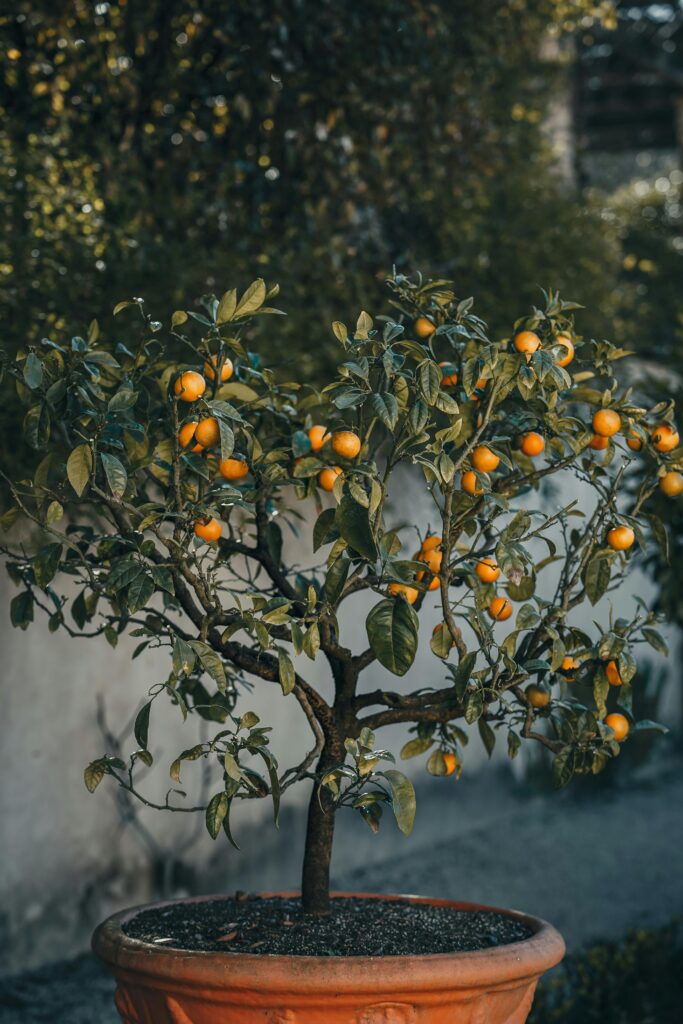
Florida’s tropical and citrus trees can thrive in containers if you choose the right setup. Whether you’re growing dwarf citrus or exotic tropical plants, picking the proper containers ensures your trees have the space and care they need to flourish. Here’s how to find the best specialized containers for your fruit-bearing beauties.
1. Large, Wheeled Planters for Easy Movement
Tropical trees and citrus plants benefit from mobility, especially when you need to shield them from Florida’s occasional cold snaps or intense summer heat. Large, wheeled planters provide the flexibility to move your plants with ease.
- Choose a large container with sturdy wheels capable of supporting the weight of your tree, soil, and water. Look for wheeled planters with locks to keep them stable once in place.
- Ensure the container is deep enough for the root system—tropical trees like banana or papaya need room to grow vertically, while citrus trees like lemon or lime require ample space for roots to spread.
- Position your planter in a sunny spot during the day, then easily move it to a more sheltered location during extreme weather, especially as cooler evenings approach.
2. Half Whiskey Barrels for Dwarf Citrus Trees
Half whiskey barrels make excellent containers for dwarf citrus varieties, providing both depth and width for healthy root development. They also add a rustic aesthetic to your patio or garden.
- Purchase a half whiskey barrel or repurpose one by drilling several drainage holes in the bottom to prevent water from pooling. Citrus trees are sensitive to waterlogged roots.
- Fill the barrel with a high-quality potting mix designed for citrus, ensuring good drainage and aeration. You may need to add sand or perlite to improve drainage in Florida’s humid climate.
- Plant your dwarf citrus tree (such as Meyer lemon or Calamondin) in the center of the barrel, allowing enough room for the roots to grow. Water deeply and place the barrel in full sunlight.
3. Air-Pruning Containers for Healthy Root Systems
Air-pruning containers are designed with porous fabric or mesh sides that encourage root pruning when roots reach the edge of the container. This promotes a dense, healthy root system, which is especially beneficial for tropical trees.
- Choose an air-pruning container sized for your tropical tree. These containers are typically made from breathable fabric, which allows air circulation to the roots and prevents root-bound issues.
- Use a lightweight potting mix to complement the air-pruning design. The mix should drain well and be rich in nutrients to support growth.
- Regularly monitor the moisture levels, as air-pruning containers tend to dry out faster in Florida’s heat. Water your tree more frequently, but be cautious not to overwater, as the fabric allows for efficient drainage.
4. Decorative Urns for Tropical Statement Plants
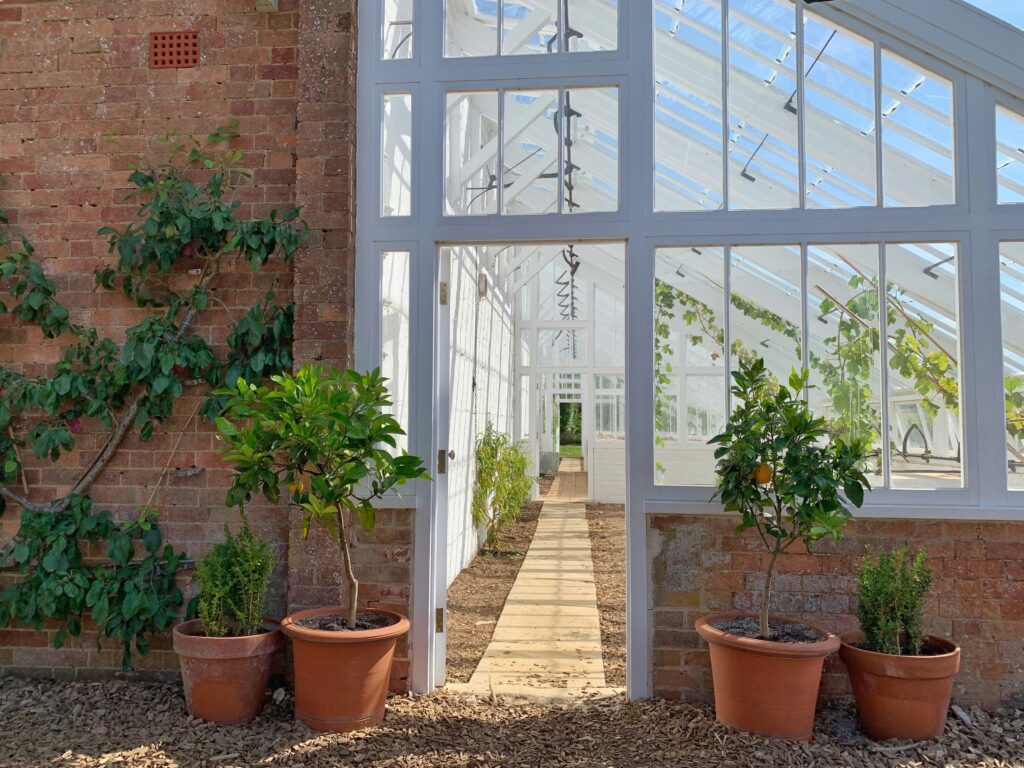
If you’re growing large tropical plants like Bird of Paradise, hibiscus, or palms, decorative urns offer both style and functionality. These containers elevate the appearance of your garden while providing enough space for your plants to thrive.
- Select a decorative urn that complements the aesthetic of your patio or garden. Ensure it’s large enough to accommodate the plant’s root system and has proper drainage holes.
- Line the bottom of the urn with gravel or broken pottery to prevent soil loss through drainage holes, then fill it with a rich, organic potting mix suitable for tropical plants.
- Position your urn in a sunny area where your tropical plant can soak up plenty of light, but be prepared to move it to a shaded spot during Florida’s hottest months to prevent leaf scorch.
5. Raised Bed Planters for Multiple Small Trees
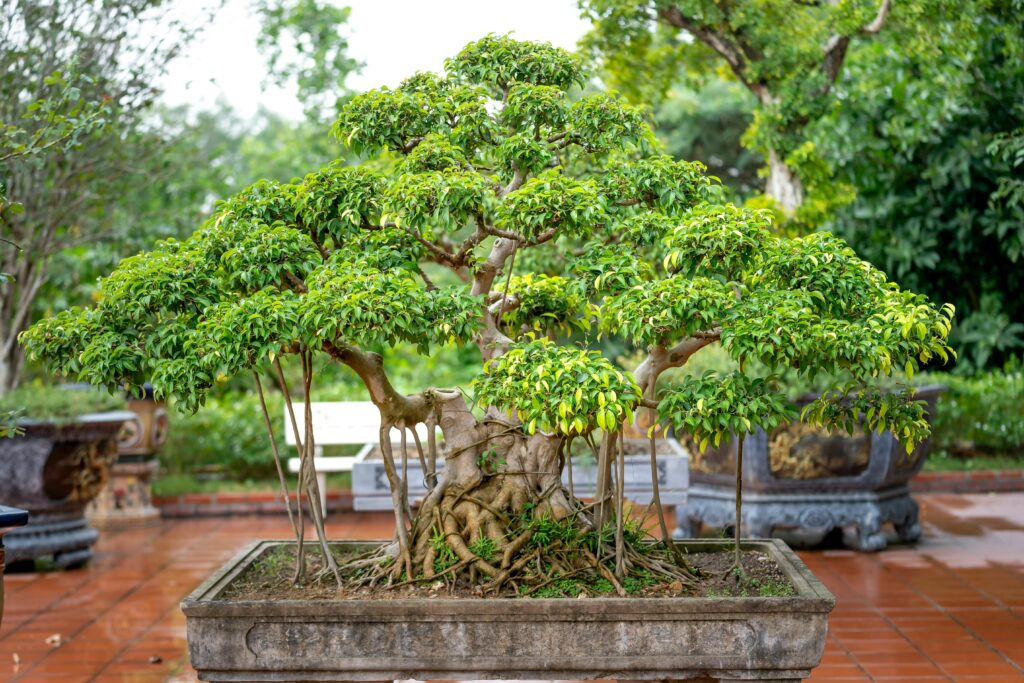
If you’re growing more than one small fruit tree, such as dwarf bananas or figs, raised bed planters provide the perfect solution for keeping them contained while giving them enough space to thrive. These planters offer excellent drainage and flexibility for managing multiple plants at once.
- Set up a raised bed planter that’s at least 18–24 inches deep to accommodate the root systems of small trees. This ensures they have room to grow while staying manageable.
- Use a well-draining, nutrient-rich soil mix, and consider incorporating compost to provide additional nutrients. Raised beds tend to dry out quickly, so keeping the soil healthy is key.
- Plant your small trees with sufficient spacing to prevent overcrowding. Water regularly and add mulch around the base of each tree to help retain moisture and regulate soil temperature.
By selecting specialized containers for your tropical and citrus trees, you’ll create a thriving, productive garden that can handle Florida’s unique climate. With the right containers—whether wheeled planters for mobility or whiskey barrels for rustic charm—you’ll have the flexibility to enjoy fresh fruit and tropical beauty right in your backyard.
Innovative Container Solutions for Florida Gardeners
When it comes to container gardening in Florida, innovation can make all the difference in dealing with the unique challenges of the climate. Whether you’re looking for convenience, year-round growth, or eco-friendly options, there are plenty of innovative containers designed to help you garden smarter, not harder. Here are some of the best solutions to consider.
1. Self-Watering Systems for Vacation-Proof Gardens
Florida’s heat can be intense, and keeping your plants hydrated while you’re away—or even just during the hottest days—can be a challenge. Self-watering containers take the guesswork out of keeping your plants moist by providing a steady water supply.
- Choose a self-watering container with a built-in reservoir. These containers store water at the base and allow plants to draw up moisture as needed through a wicking system.
- Fill the reservoir, and top off the container with high-quality potting mix that allows for good wicking action. Make sure the soil reaches the bottom to absorb water efficiently.
- Plant your vegetables, herbs, or flowers as usual. Self-watering containers are especially beneficial for water-loving plants like tomatoes, cucumbers, and herbs. Check the reservoir every few days, and refill as needed.
- 【Practical Size Combo】-These plastic planters indoor combines with 6 different sizes, 8 inch 7inch 6.5 inch 6 inch 5.5 inch 5 inch which are suitable for planting most small and medium-sized home office plants.Ideal gift, Carbonfree Certified.
- 【Different Size Combo】These Self watering pots combines with 5 different sizes.10inch/9inch/8inch/7.5inch/7inch plant pots.Suitable for indoor and outdoor planting of various plants and flowers,Such as Snake Plant,ZZ Plant,Aloe,African,Violet,Monstera etc.
- 🌿 【Self-Watering Pots with Water Level Indicator】 Designed for busy plant lovers, our 8/10/12 self-watering pots feature a built-in ABSORBENT COTTON WICK SYSTEM that automatically draws water from the detachable bottom tray. The TRANSPARENT WATER LEVEL WINDOW WITH MEASUREMENT MARKINGS lets you monitor hydration at a glance, ensuring no overwatering or underwatering. Perfect for indoor/outdoor plants, this system keeps soil evenly moist for up to 7-10 days—ideal for vacations or hectic schedules.
- Convenient Self-Watering Design: Features a distinctive two-layer self-watering system; The inner container elevates the plants and includes water-absorbent strips at its base; This ingenious design maintains soil moisture at an ideal level, preventing it from becoming overly saturated and safeguarding against root rot
- [Self Watering Planters]: Vanslogreen plant pots indoor are designed with a saucer that acts as a reservoir to store a large amount of water, separats the reservoir from the potting soil. When your plant needs water, the water is diverted from the reservoir to the soil through absorbent cotton ropes. Your plants only need to be watered once a fortnight.
2. Hydroponic Containers for Year-Round Growing
If you want to maximize growing potential without soil, hydroponic containers offer a soilless solution ideal for Florida’s climate. These systems are perfect for growing leafy greens, herbs, and even small fruiting plants year-round.
- Set up your hydroponic container by assembling the unit according to the manufacturer’s instructions. Most systems use water and nutrient solutions to deliver everything the plant needs directly to the roots.
- Plant seedlings in the designated compartments, often using a lightweight medium such as coconut coir or perlite to support the roots.
- Regularly monitor the nutrient solution and water levels, topping up and adjusting pH as needed. Hydroponic systems can thrive indoors or outdoors, giving you the flexibility to grow fresh produce all year, regardless of Florida’s weather.
3. Stackable Planters for Vertical Gardening
Maximize your space with stackable planters, a great solution for small patios or balconies. These vertical gardening containers allow you to grow multiple plants in a compact area, making the most of your space without sacrificing plant variety.
- Select stackable planters that allow for drainage between layers. Many designs are lightweight and easy to assemble, letting you create as tall a garden as you need.
- Fill each tier with potting mix and plant a variety of shallow-rooted plants like strawberries, herbs, or leafy greens. You can mix and match plants, creating beautiful combinations in small spaces.
- Water from the top and let gravity do the rest, as water will naturally flow down to lower levels, ensuring every tier gets hydration. Rotate your planters regularly to ensure even sun exposure.
- A Simple Space Saving Garden Solution: Plant & Stack
- Grow More Healthy Organic Fruits/Veggies/Flowers @ Home (Strawberries, Tomatoes, Peppers, Herbs, Greens, Green Beans, Beets…)
4. Smart Pots with Built-in Water Indicators
For Florida gardeners who want precision without constant monitoring, smart pots with built-in water indicators offer an easy way to ensure plants are watered correctly. These pots let you know exactly when your plants need moisture, preventing both under and overwatering.
- Purchase a smart pot with a visible water level indicator. These containers typically have a float or gauge that rises or falls with the water level in the reservoir.
- Plant as usual, ensuring good soil drainage and enough space for your plants to grow. Keep an eye on the water indicator and refill the reservoir as needed, especially during hot, dry periods.
Smart pots work well with a variety of plants, from flowering annuals to herbs and vegetables. They’re especially useful for gardeners who tend to overwater or under-water, as the built-in system makes watering more intuitive.
- 【Intelligent maintenance assistant】Usually we are worried about the maintenance of plant survival, the smart planter is equipped with 7 kinds of multi-dimensional sensors specifically for plants to help us protect the health of plants to the maximum extent.
- 【Planter for 36 kinds of plants】The planter contains 36 plant care modes, which makes us not need to have maintenance experience, as long as you choose your favorite plants and give it to the smart planter, it will help us take care of the plant growth.
- 【Fun and interactive】It seems to be a cute pet like a dog. Inverter touch sensing technology allows the planter to carry out rich interactive sessions in daily life, such as good cold, thirsty, low battery and other sensory transmission.
- 【Support connecting smart home】If your home has a smart home system installed, the smart planter can be connected to them to meet your needs to a greater extent.
- 【Rich usage scenarios】In the living room, bedroom, office desk, bedroom nightstand, the smart planter can accompany your life and bring you happiness, it is also the best choice for gifts for our girlfriends, parents or other friends.
5. Biodegradable Containers for Eco-Friendly Gardening
If sustainability is a priority in your gardening practice, biodegradable containers offer an eco-friendly alternative to plastic pots. These containers break down over time, reducing waste while still providing a reliable home for your plants.
- Choose biodegradable containers made from materials like coconut coir, peat, or paper pulp. These containers are perfect for starting seeds or transplanting young plants, as they can be planted directly into the soil.
- Fill the biodegradable pot with seed-starting mix and plant your seeds or seedlings. These containers allow roots to grow through the walls, so the plant can easily establish itself once transplanted.
- When your plants are ready to move into a larger container or the ground, simply plant the entire biodegradable pot. Over time, the container will decompose naturally, leaving no trace behind.
By integrating these innovative container solutions into your Florida garden, you can streamline care, enhance productivity, and maintain a more sustainable approach to growing plants in the unique climate. Whether you’re aiming for convenience, efficiency, or eco-friendliness, there’s a container option perfect for every gardener’s needs.
- 【Biodegradable】Our biodegradable seedling pots are made from natural, plant-based materials, ensuring they break down easily in the soil, leaving no harmful residues
- Package Include: Plant starter pots package include 60 pack peat pots. Each pot measures 3.15 inches in diamete. Comes with 50 pcs plant labels, and you can use them to mark the seeds in your peat pots
- Peat Pots Dimensions: 50 plant starter pots(4inch) with 20 Plant Labels, Ideal for both indoor and outdoor gardening, Comes with 20 pcs plastic plant labels you can use them to mark the seeds in your peat pots
Get Growing in The Right Pot for the Right Plant
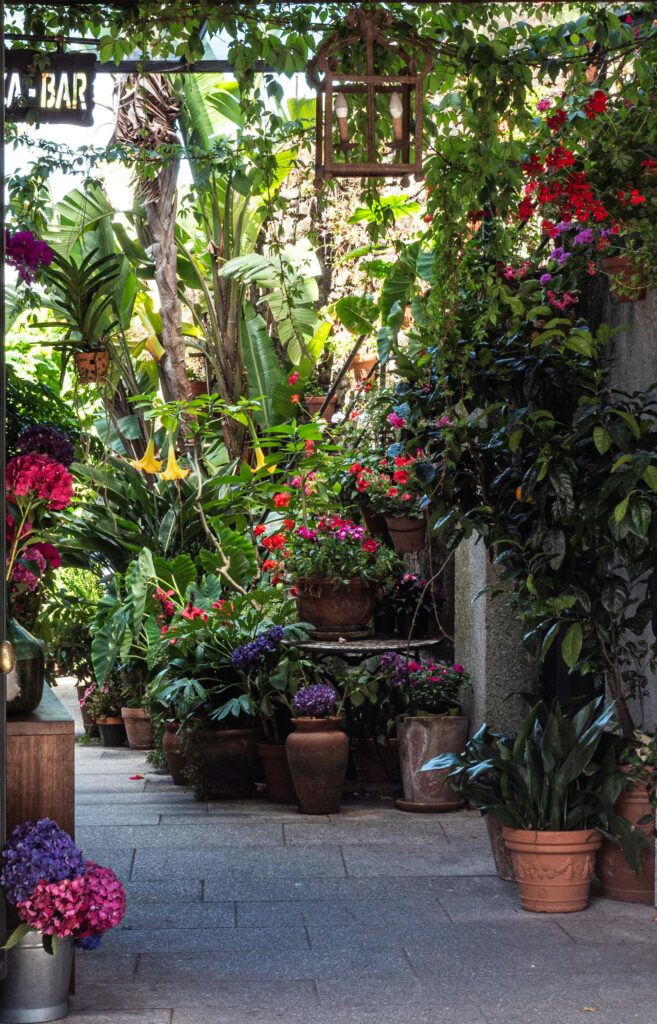
There you have it, fellow Florida gardeners – a comprehensive guide to the best containers for every plant type in our unique climate. Remember, the perfect pot is more than just a pretty face; it’s a crucial tool in creating a thriving garden. Whether you’re growing juicy tomatoes, vibrant flowers, or a mini citrus grove, the right container can make all the difference. So go ahead, experiment with different options, and watch your Florida garden flourish! And hey, if you end up with more beautiful plants than you know what to do with, you know where to find me – I’m always up for a plant swap!
Last update on 2025-08-07 / Affiliate links / Images from Amazon Product Advertising API
This product presentation was made with AAWP plugin.
























